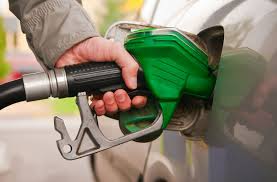Bad news for motorists in South Africa
The retail industry has been in a transitional stage since before the onset of the pandemic. If anything, the pandemic has accelerated retailers’ adoption to digitalisation.

Staff Writer | Business Tech
Local petrol prices dropped a fraction, by between 1 and 4 cents per litre for October, while diesel prices went up by 23 cents per litre. And according to the BER, consumers should prepare for further pain in November.
“Combined with disappointment after the OPEC+ oil grouping voted against a more aggressive ramp-up of oil output, the increased demand for oil amid the gas price surge (in the UK) pushed the Brent crude oil price comfortably above $80 a barrel last week. This is notably higher than the average of $75 a barrel in September,” the BER said.
Oil prices moved higher over the course of September, and have continued to rise in the first weeks of October.
On Monday (11 October) Brent crude rose to $83.59 a barrel after gaining nearly 4% last week. US oil was up to $80.81 a barrel, the highest recorded since late 2014, also increasing over 4% during the last week.
According to analysts, oil prices have increased as more vaccinated populations are being brought out of coronavirus lockdowns, supporting a revival of economic activity. Prices have also moved on a decision by the Organisation of the Petroleum Exporting Countries Plus’ (OPEC+) to maintain a gradual supply hike.
OPEC and its allies decided to stick to a plan of returning just 400,000 barrels a day to the market in November, which has added more upward price pressure as analysts had anticipated the group would pump more, Bloomberg said.
The decision comes as the world’s biggest oil company, Saudi Aramco, said the global natural-gas shortage has boosted demand for crude by 500,000 barrels a day.
“If sustained, the current oil price should see a notable rise in domestic fuel prices in early November,” the BER said.
The extent of the increase will depend on local currency moves during the remainder of the month, the economists said.
“Amid all the international turmoil, the rand exchange rate was resilient last week, ending the week marginally firmer against the US dollar,” the BER said. However, the rand’s position is still relatively weak compared to a month ago, and remains around the R15 to the dollar mark.
The rand is widely considered one of the most volatile currencies globally, which has been on full display over the past six months, showing no clear trend, dipping below R14.00 to the dollar in May and June, before weakening to above R15.00 in August, and then revisiting most points in that range during September.
According to the South African Reserve Bank (SARB), the currency is now trading at pre-Covid-19 levels, benefiting from record terms of trade and a large current account surplus, as well as very low global interest rates.
However, the BER warned that the surging gas price in the UK has solidified a growing narrative that higher global inflation could be more persistent.
A poll of economists by Reuters shows that the rand is expected to mark a stronger final quarter of 2021, where the unit is forecast to firm around 3% over the next six months to around R14.90/dollar.
More bullish forecasts put the rand at R14.25 by year-end. This is expected to lead to some depreciation in the currency in the new year, with Bianca Botes, a director and treasury partner at Citadel Global, believing the rand could reach R16.00 against the dollar.
News Category
- International retailers
- On the move
- Awards and achievements
- Legislation
- Wine and liquor
- Africa
- Going green
- Supplier news
- Research tools
- Retailer trading results
- Supply chain
- Innovation and technology
- Economic factors
- Crime and security
- Store Openings
- Marketing and Promotions
- Social Responsibility
- Brand Press Office
Related Articles

Makro secures exclusive rights to SA’s most sou...

Checkers adds 41 new wines to Odd Bins range

With petrol at almost R20 a litre, food prices ...

Petrol price shocker for South Africa


